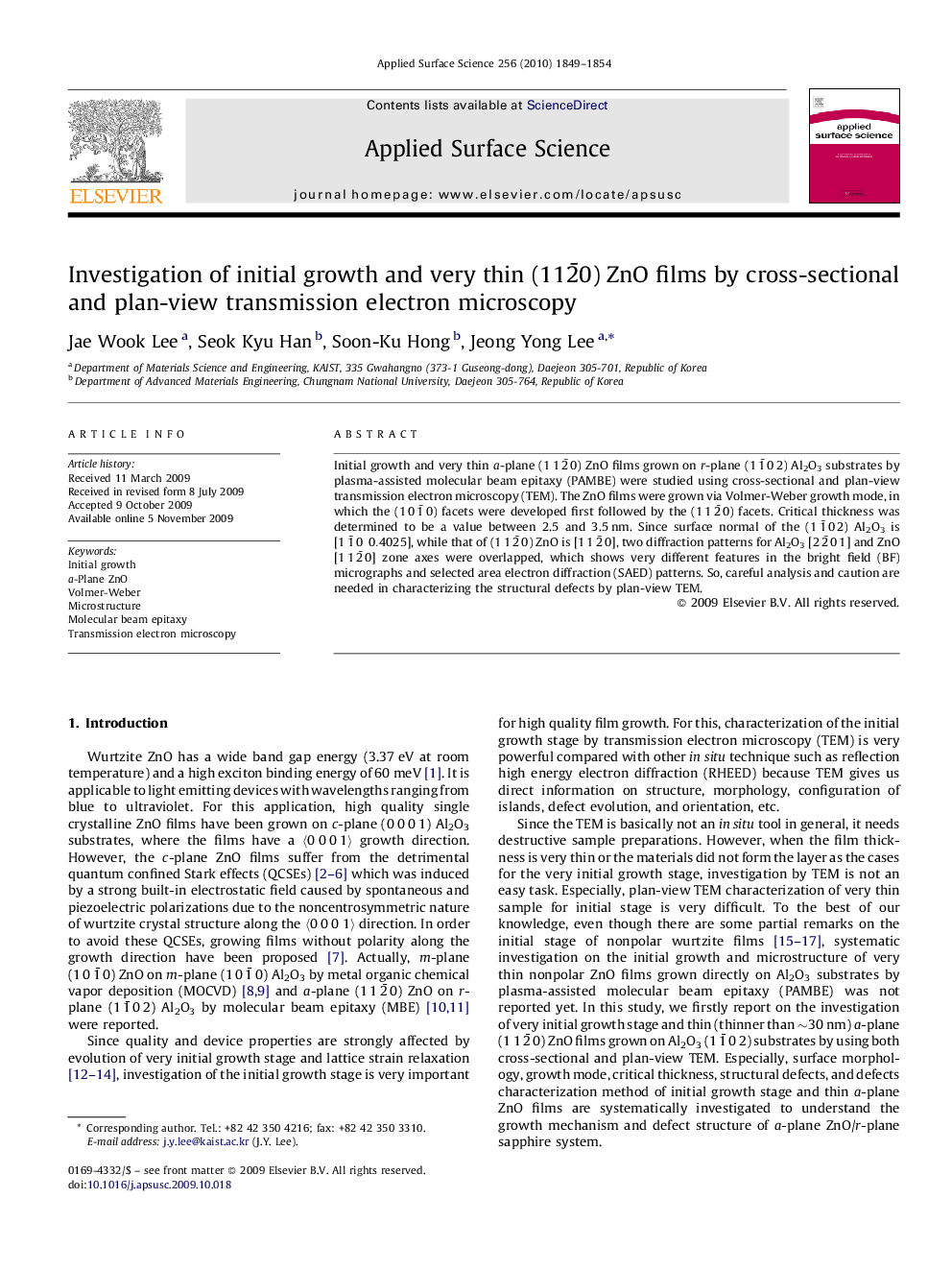| Article ID | Journal | Published Year | Pages | File Type |
|---|---|---|---|---|
| 5363740 | Applied Surface Science | 2010 | 6 Pages |
Abstract
Initial growth and very thin a-plane (112¯0) ZnO films grown on r-plane (11¯02) Al2O3 substrates by plasma-assisted molecular beam epitaxy (PAMBE) were studied using cross-sectional and plan-view transmission electron microscopy (TEM). The ZnO films were grown via Volmer-Weber growth mode, in which the (101¯0) facets were developed first followed by the (112¯0) facets. Critical thickness was determined to be a value between 2.5 and 3.5 nm. Since surface normal of the (11¯02) Al2O3 is [11¯00.4025], while that of (112¯0) ZnO is [112¯0], two diffraction patterns for Al2O3 [22¯01] and ZnO [112¯0] zone axes were overlapped, which shows very different features in the bright field (BF) micrographs and selected area electron diffraction (SAED) patterns. So, careful analysis and caution are needed in characterizing the structural defects by plan-view TEM.
Related Topics
Physical Sciences and Engineering
Chemistry
Physical and Theoretical Chemistry
Authors
Jae Wook Lee, Seok Kyu Han, Soon-Ku Hong, Jeong Yong Lee,
